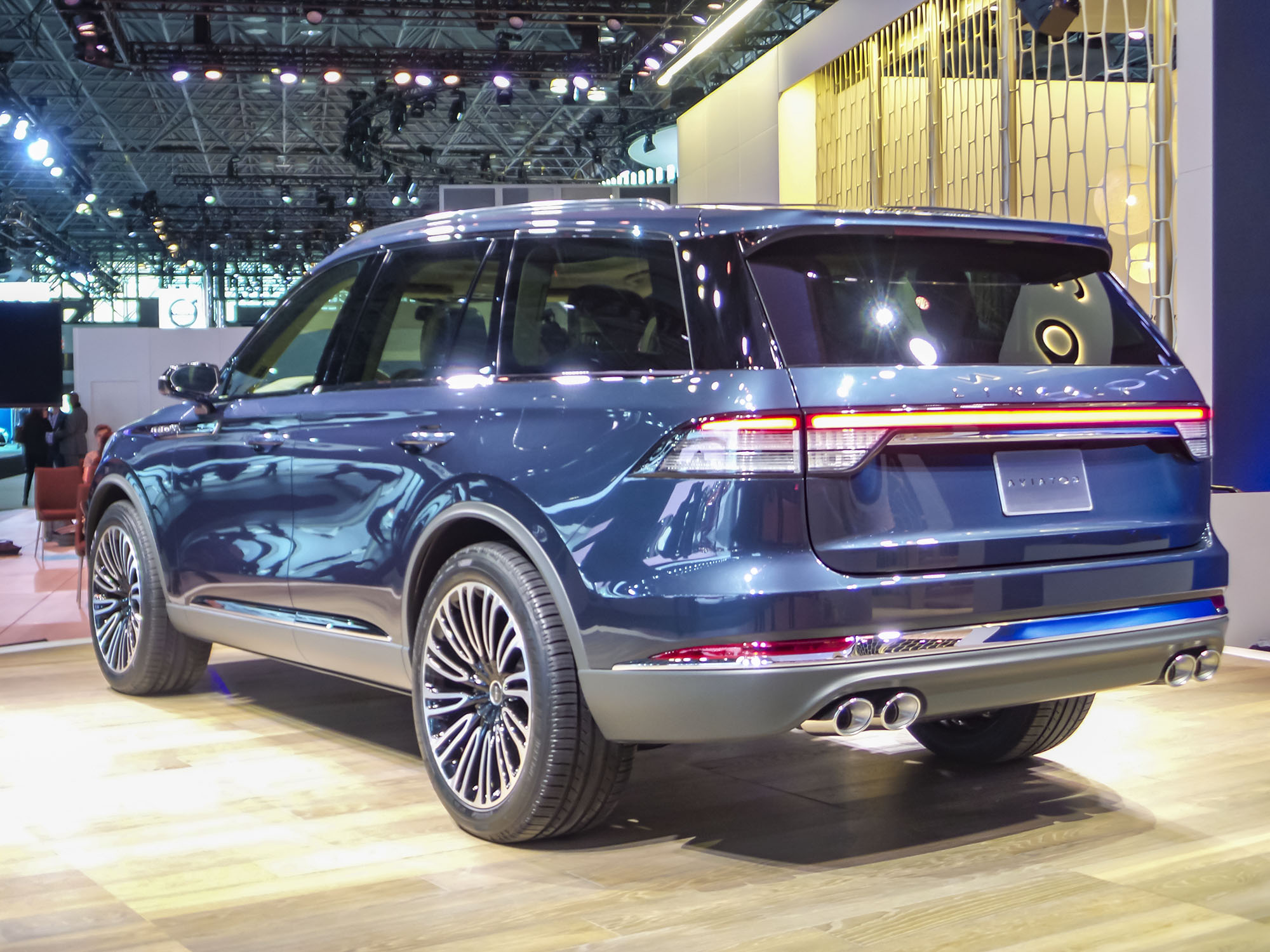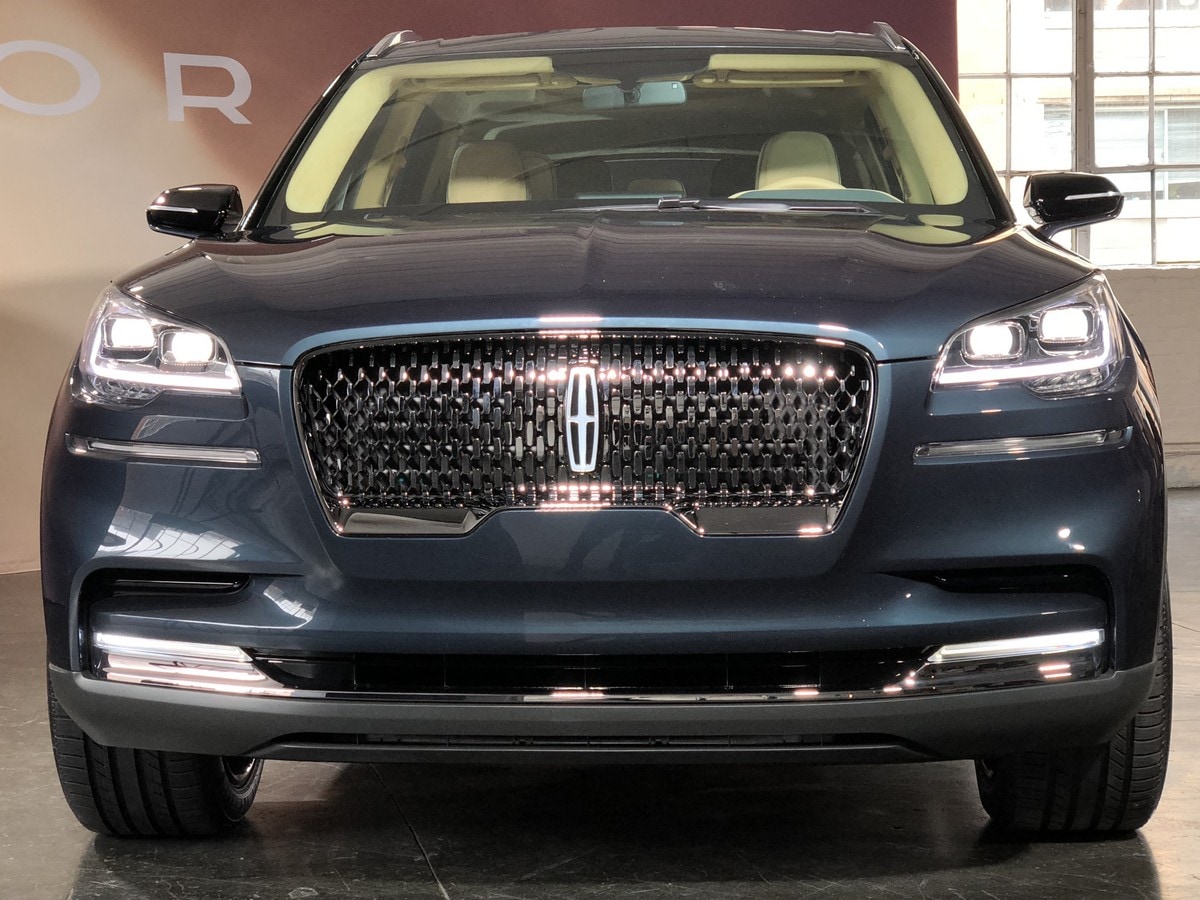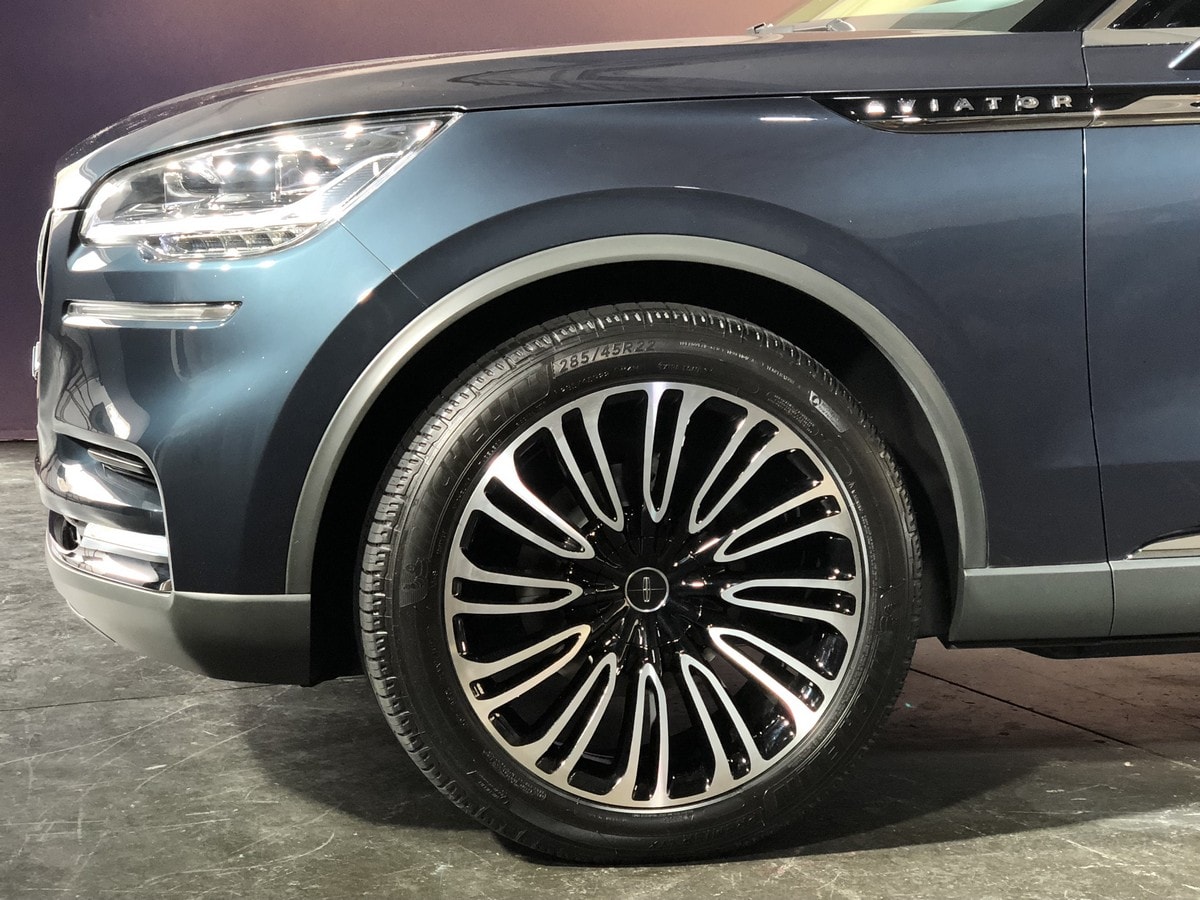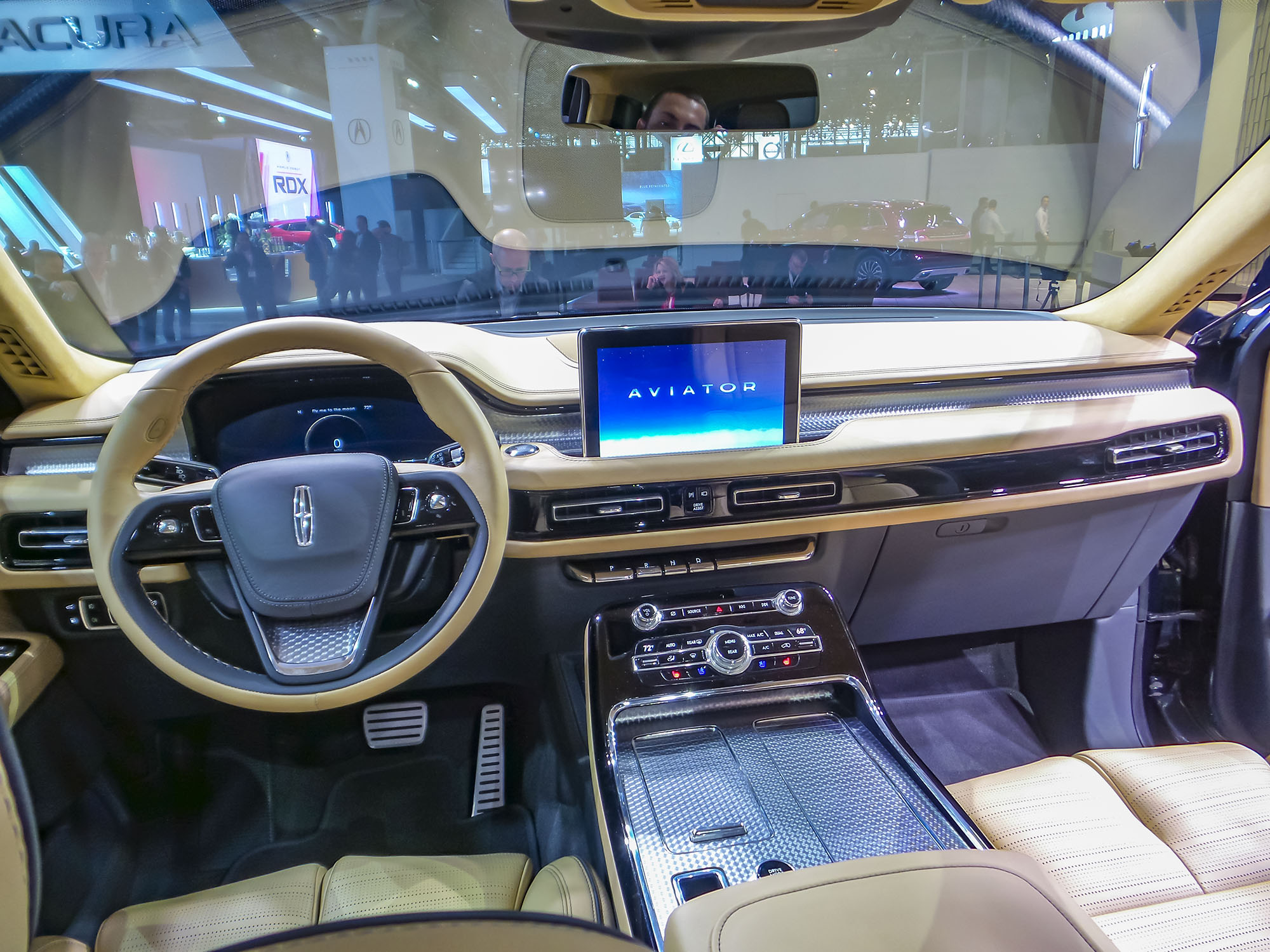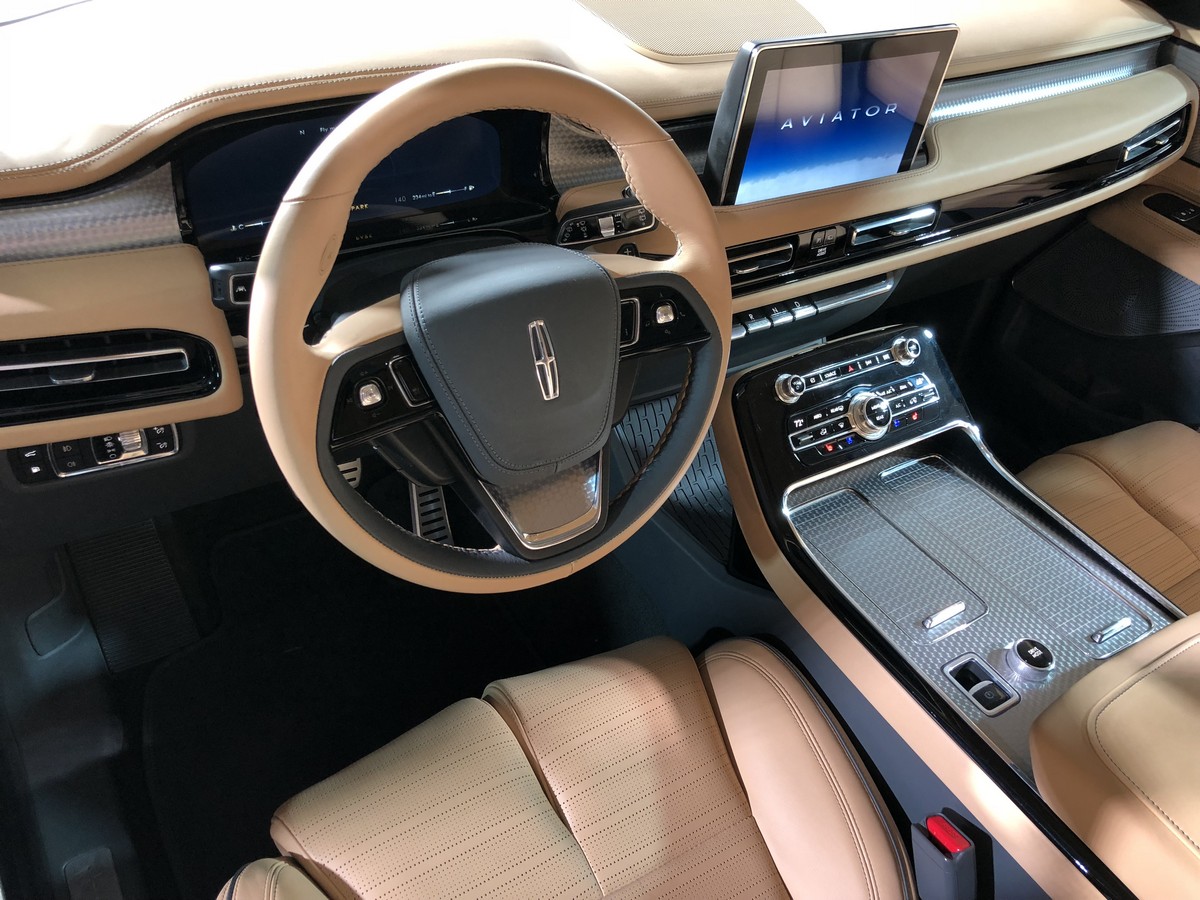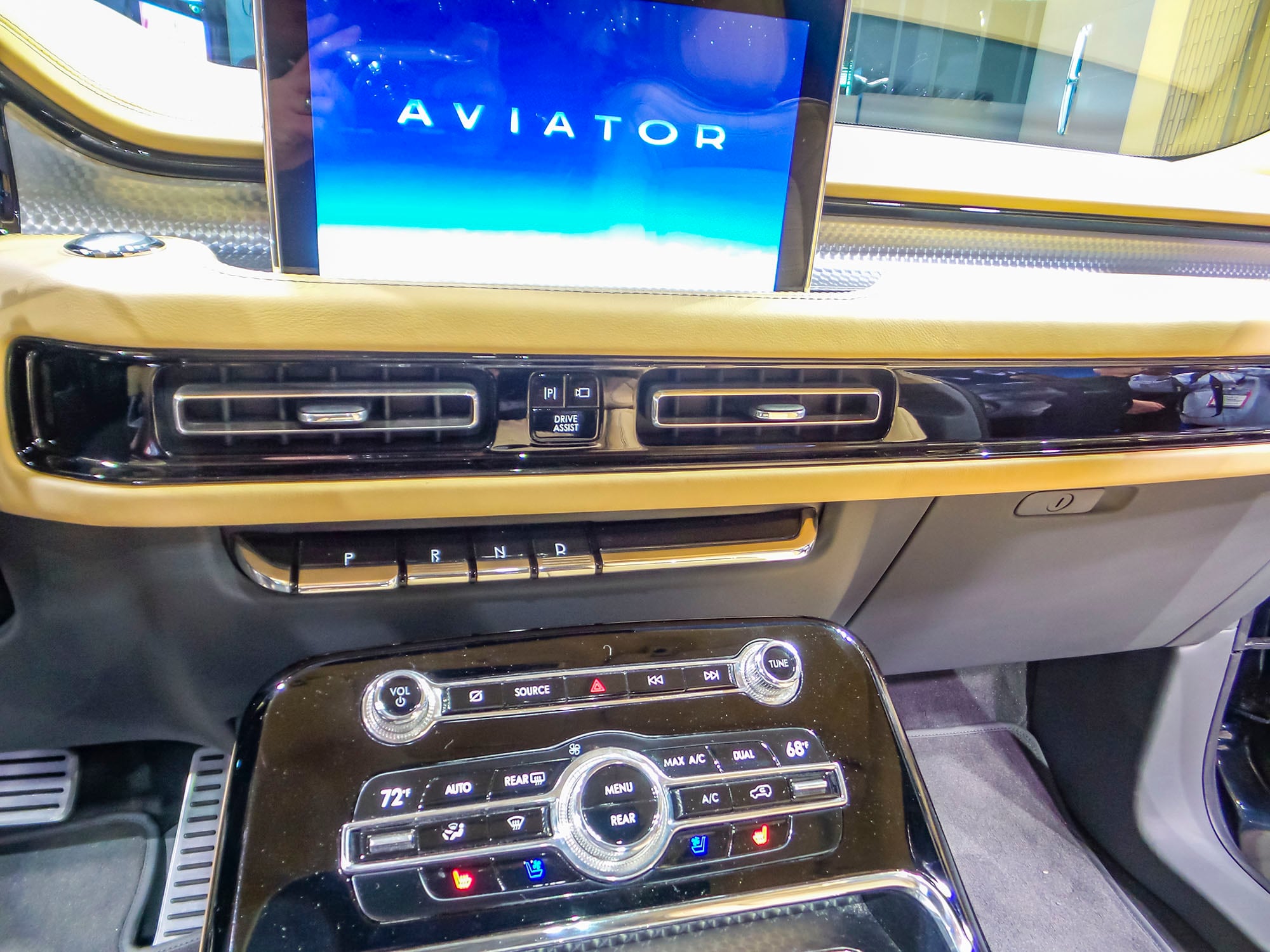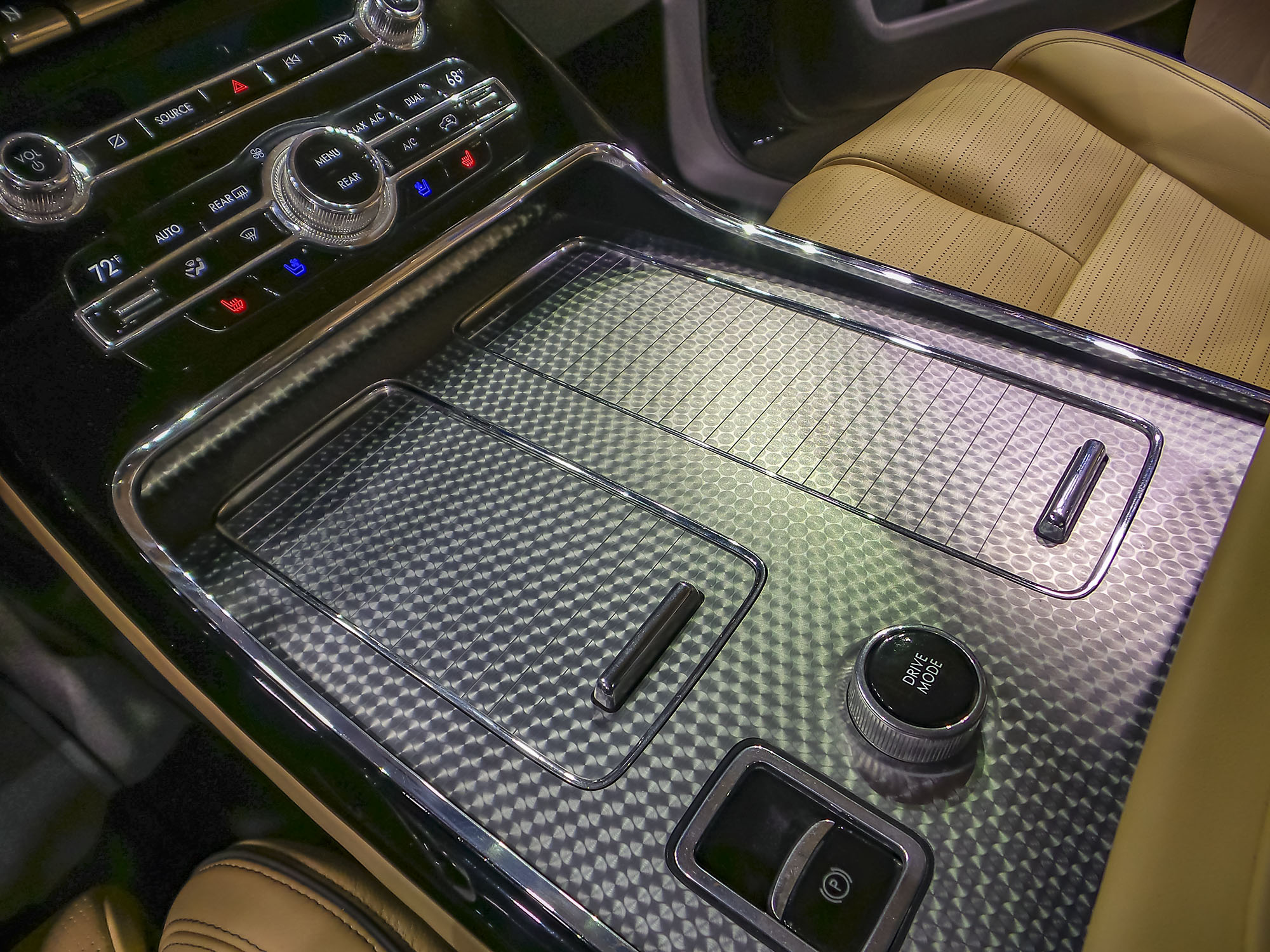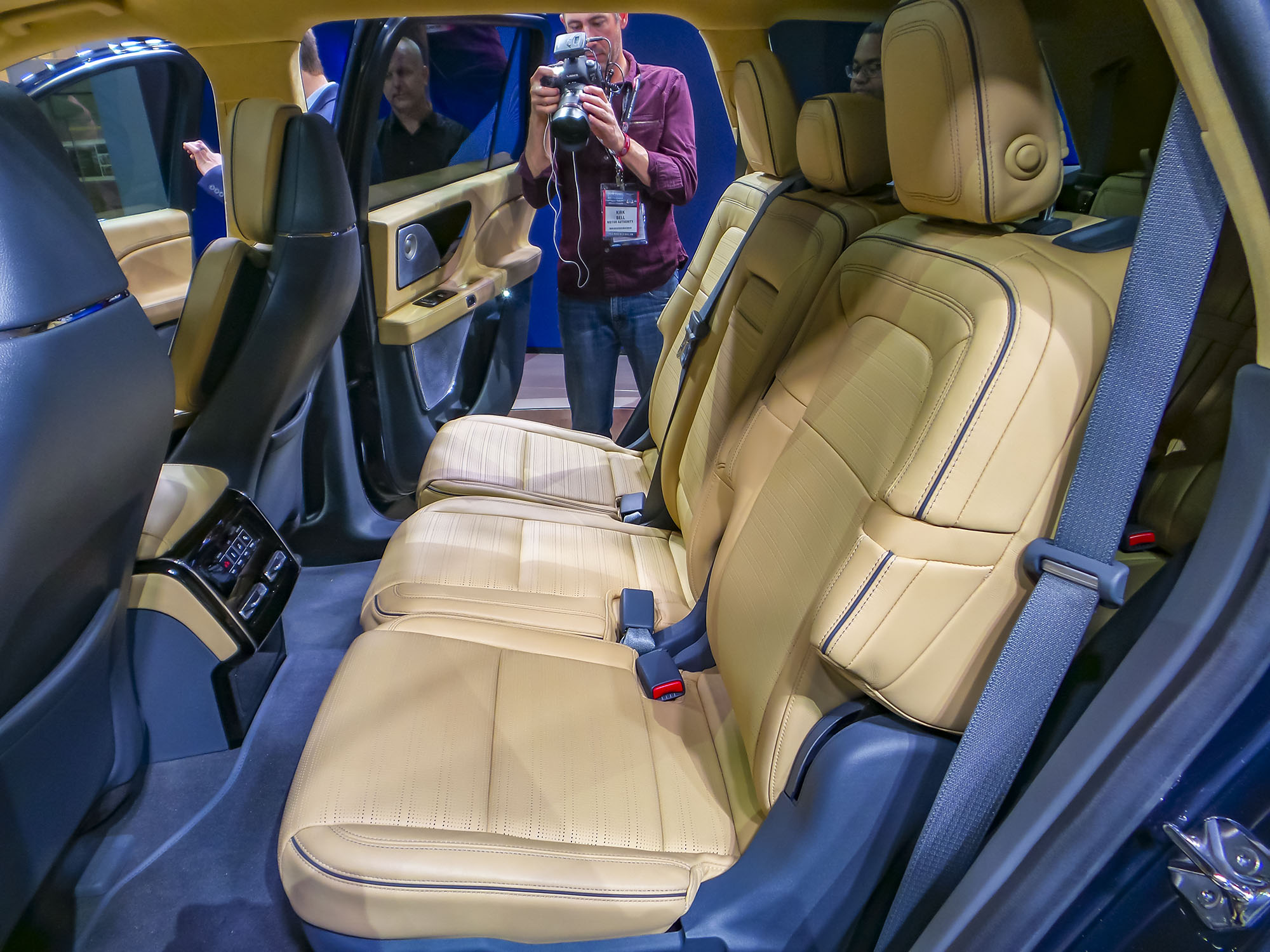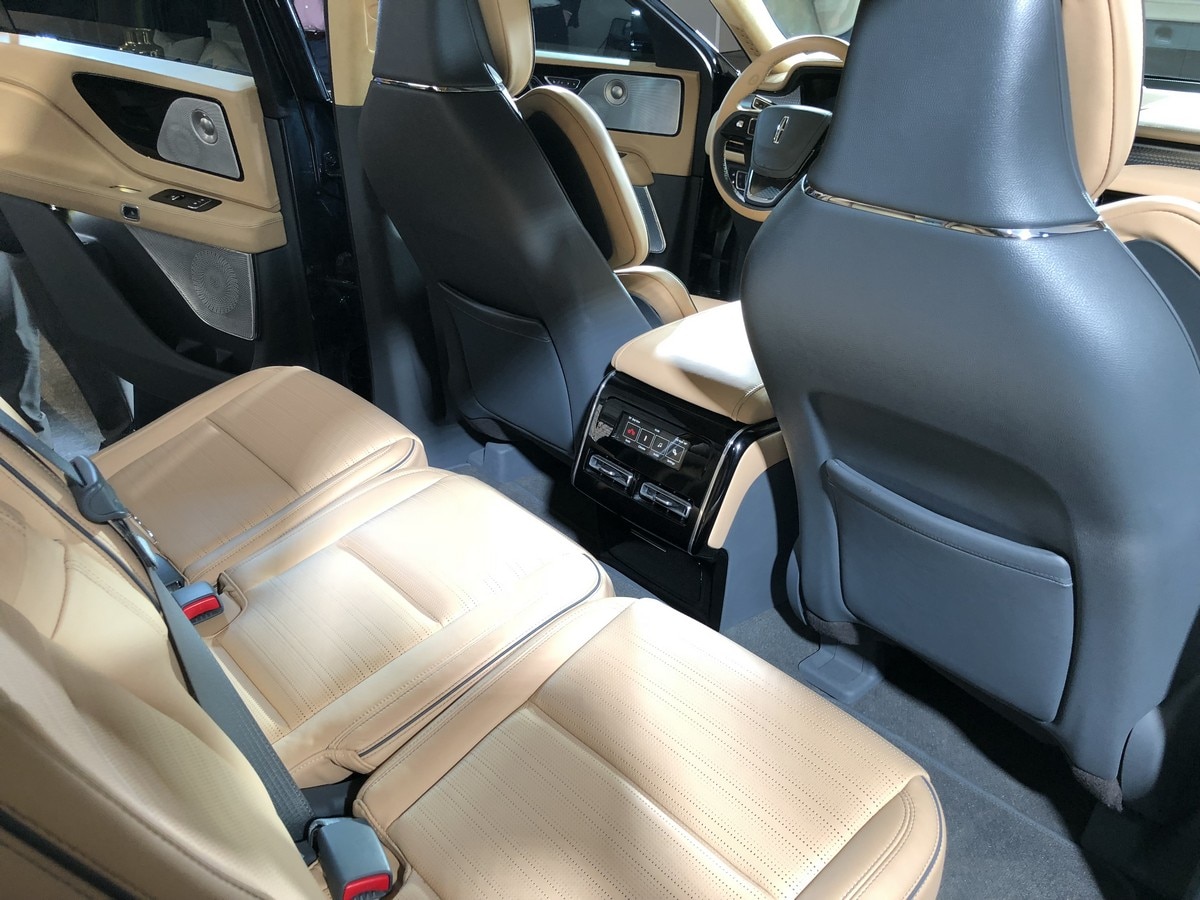- Available powertrains will be a Twin-Turbo V6 or Plug-in Hybrid
- Keyless remote via a smartphone app – keyfob eliminated
- New Lincoln Co-Pilot 360 – a menu of driver-assist features
The relationship of aeronautical design to earthbound vehicles may seem remote, but aircraft have been an inspiration to automotive stylists in the past and the 2020 Lincoln Aviator is the latest example. According to Lincoln Design Director David Woodhouse, the way the Aviator’s shape tapers toward the rear creates “a distinct aerofoil analogy.”
Displayed at the New York show, aircraft-style instruments and a Flight Blue finish enhances the Aviator’s claim to aeronautical cues. Similarities between SUVs and fighter jets notwithstanding, the Aviator does promise to bring plenty of power to bear when it goes on sale sometime in 2019. When it arrives, the new Lincoln will be available with two powertrain options—a potent twin-turbo V6, and a plug-in hybrid system augmenting the turbo engine’s output.
Lincoln refrained from any specifics about the powertrain. The V6 is an educated guess, the probability is the 450-horsepower twin-turbo V6 employed in the Lincoln Navigator. Also likely is the Navigator’s 10-speed automatic transmission.
RELATED: 2020 Lincoln Aviator First Review
The Aviator represents the first time the company has employed a twin-turbo engine with a plug-in hybrid system. While max output numbers remain to be seen, Lincoln characterizes the combo as its “quietest, smoothest, most powerful drive yet,” and “mightier than many supercars.”
Dimensions, and how much structure the Aviator will share with Lincoln’s big boy Navigator figure as another wait-and-see but the company does stipulate to three-row seating and a rear-drive, body-on-frame chassis. This suggests a vehicle of substantial size and bodes well for the upcoming redesign of Ford’s Explorer.
Goodbye keyfob
Lincoln is a little more forthcoming about Aviator’s comfort and convenience features. For example, the Aviator will take keyless remote unlocking and starting to a new level by eliminating the keyfob from the equation. Owners will be able to perform those functions with their smartphones.
A forward-looking camera will be linked to the Aviator’s automatic damping system, adjusting the suspension in anticipation of changes in the road surface just ahead. Lincoln calls it Suspension Preview Technology, a first for the company.
Still another first: Lincoln Co-Pilot 360, a menu of driver-assist features that includes auto emergency braking with pedestrian detection, blind spot information system, lane keeping assist, automatic high beam, rear view camera, and rear cross traffic alert. A new optional driver-assist feature—Reverse Brake Assist, capable of stopping the Aviator when the driver fails to respond to an unseen object while backing up.
RELATED: See the totally redesigned 2020 Ford Explorer
Beyond that, the Aviator will be equipped with the latest SYNC system, which includes a variety of “considerate prompts” to the driver. Example: when the low fuel light illuminates, the big center dash touch screen responds with nav system information on the nearest gas stations.
Other connectivity standard features: on-board Wi-Fi, wireless phone charging, and orchestral audio. Naturally, the cabin appointments will be posh in the standard Aviator, even more so in the Black Label edition. While it may be difficult to see aircraft influence in Lincoln’s new SUV, the luxury quotient is unmistakable.
More New and Redesigned Models for 2019

